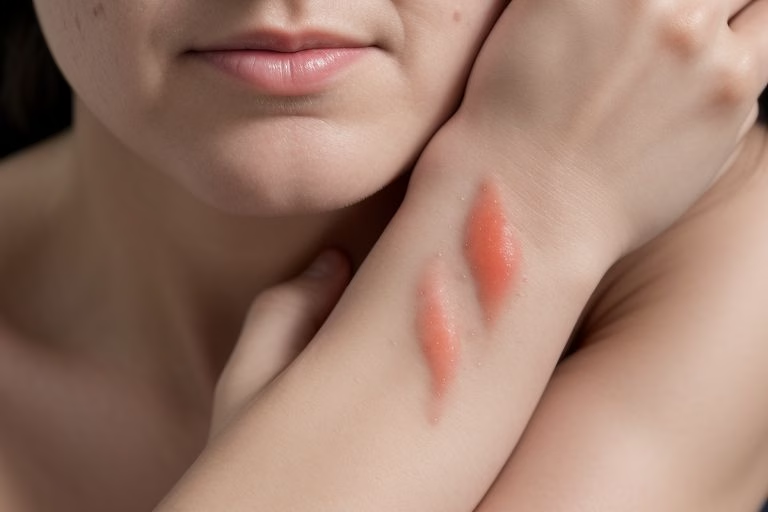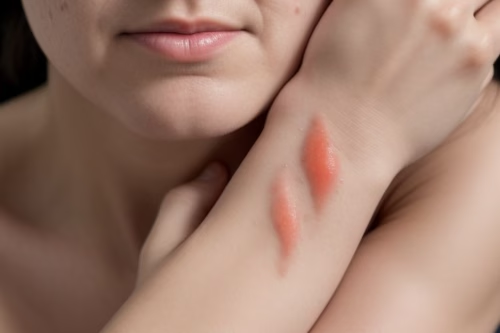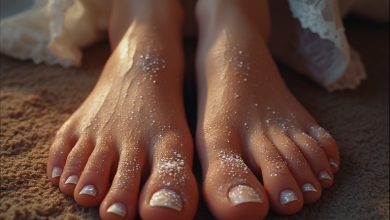

An itchy rash on your wrist can be more than just a minor nuisance; it can disrupt your day and leave you feeling frustrated. If you’ve been dealing with an uncomfortable rash, you know how it can interfere with your normal routine. Whether it’s due to allergies, a skin condition, or an infection, the good news is that you don’t have to suffer in silence. In this article, we’ll share 7 proven ways to soothe and heal that persistent itchy rash fast.
Why You Should Care About Treating an Itchy Rash on Your Wrist
An itchy rash on your wrist could signal a range of issues, from something as simple as dryness to a more serious skin condition like eczema or contact dermatitis. Understanding the cause of your rash is key to determining the right treatment plan and finding relief fast. This article will help you identify causes, remedies, and when to seek medical advice, making sure you get the fastest relief possible.
1. Understanding the Causes of an Itchy Rash on Your Wrist
Before you can treat your itchy rash, it’s essential to understand what’s causing it. Some of the most common causes include:
- Contact Dermatitis: Caused by an allergic reaction to something your skin has come into contact with, like certain metals in jewelry, soaps, or lotions.
- Eczema: A chronic skin condition that causes inflammation and itching, often aggravated by dry skin.
- Infections: Fungal or bacterial infections can lead to itchy rashes.
- Psoriasis: A skin condition where the immune system causes skin cells to multiply rapidly, leading to scaly, itchy patches.
By understanding the root cause of your itchy rash, you can choose the most effective remedy.
2. Use Cold Compresses to Soothe the Itch
One of the quickest ways to relieve an itchy rash is by using a cold compress. Applying something cool to the affected area helps reduce inflammation, cools the skin, and numbs the area, offering temporary relief from itching. Here’s how you can do it:
- Step 1: Take a clean cloth or towel and soak it in cold water.
- Step 2: Gently press the cloth against the rash for about 10-15 minutes.
- Step 3: Repeat this process every few hours for the best results.
This simple and natural remedy is perfect for those seeking fast relief.
3. Apply Topical Anti-itch Creams or Ointments
There are several over-the-counter creams that can help relieve itching. Look for options that contain ingredients like:
- Hydrocortisone: A mild corticosteroid that reduces inflammation and itching.
- Calamine Lotion: A soothing lotion that helps dry out oozing rashes and relieves itching.
- Antihistamine Creams: These help calm allergic reactions that may be causing your rash.
Make sure to follow the instructions and apply the product as directed to avoid further irritation.
4. Try Aloe Vera for Natural Relief
Aloe vera is widely known for its soothing and cooling properties, making it a fantastic natural remedy for an itchy rash on your wrist. This plant has anti-inflammatory properties that can help reduce swelling and irritation, while its cooling gel provides instant relief.
- Step 1: Cut open an aloe vera leaf.
- Step 2: Extract the gel and apply it directly to the rash.
- Step 3: Leave it on for about 20 minutes before rinsing off with cool water.
Repeat this process 2-3 times a day to see significant improvement.
5. Use Oatmeal Baths to Calm the Skin
Oatmeal is another natural remedy that can help soothe an itchy rash. Oats have anti-inflammatory properties that calm irritated skin and relieve itching.
Here’s how you can make an oatmeal bath at home:
- Step 1: Grind 1 cup of plain, unflavored oats into a fine powder.
- Step 2: Add the powdered oats to a lukewarm bath and stir until it dissolves.
- Step 3: Soak in the oatmeal bath for 15-20 minutes.
Not only will this oatmeal remedy help relieve itching, but it will also keep your skin moisturized and soft.
6. Moisturize the Skin Regularly
Dry skin can exacerbate itching, so keeping the affected area moisturized is essential for relief. Apply a fragrance-free, hypoallergenic moisturizer after washing the area to lock in moisture and prevent dryness. Look for ingredients like:
- Ceramides: Help restore the skin barrier.
- Glycerin: Draws moisture to the skin.
- Shea Butter: Nourishes and softens the skin.
Moisturizing regularly can prevent the rash from becoming dry and cracked, reducing the risk of further irritation.
7. When to See a Doctor About Your Rash
While most rashes are harmless and can be treated at home, it’s important to know when to seek professional help. Consider seeing a doctor if:
- The rash doesn’t improve after several days of at-home care.
- You notice severe swelling, pain, or blisters.
- The rash is spreading quickly or appears infected (pus, warmth, redness).
- You experience other symptoms like fever or difficulty breathing.
In these cases, your doctor may prescribe stronger treatments, such as prescription creams or oral medication.
FAQs: Treating an Itchy Rash on Your Wrist
Q: What causes an itchy rash on my wrist?
An itchy rash on your wrist can be caused by contact dermatitis, eczema, fungal infections, or psoriasis. Understanding the root cause will help determine the best treatment.
Q: How long does it take for an itchy rash to heal?
The healing time depends on the cause of the rash. Mild cases may improve within a few days, while chronic conditions like eczema may require ongoing care.
Q: Can I use natural remedies for my rash?
Yes! Remedies like aloe vera and oatmeal baths can be effective in soothing the itch and reducing inflammation. Always patch-test before applying anything to your skin.
Q: Should I scratch my rash?
It’s best to avoid scratching the rash, as it can lead to further irritation, open wounds, or even infection. Try remedies like cold compresses or creams for relief instead.
An itchy rash on your wrist can be uncomfortable, but with the right treatment, you can find relief fast. By understanding the cause, using soothing remedies like cold compresses, topical creams, and natural treatments, you can ease the discomfort and promote healing. If the rash persists or worsens, don’t hesitate to consult a healthcare provider.
For more tips on healing common skin conditions, download our Ultimate Skin Care Guide or subscribe to receive expert wellness advice straight to your inbox!



